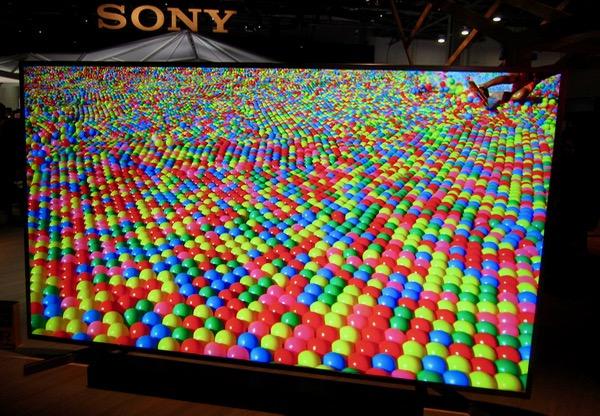Sony Fills in the Blanks as it Rolls Out its 2018 TVs

At center stage were the new XBR-XA8F OLEDs, in 55-inch ($2,800) and 65-inch ($3,800) sizes. This makes them marginally less expensive than Sony’s same-sized A1E OLEDs. The A1E models, which remain unchanged from last year, also offer these screen sizes plus a 77-incher.
The A8Fs employ a more conventional stand than the backward-sloped, the easel-style of the A1Es, and can therefore sit closer to the wall in a wall-mount setup. But the A8Fs are still thicker than some of the competition. Sony’s Acoustic Surface technology, also used in the new A8Fs as it is in the A1Es, uses the screen itself to radiate the sound. But the drivers for the left and right channels are located behind the screen and protrude slightly from the back, increasing the chassis’ overall depth. The A8Fs also employ two smaller woofers on the back, unlike the single larger woofer mounted in the A1Es rear stand/support.
According Sony’s website, apart from the sound system and stand design, and presumably performance, the A8Fs and A1Es are identical, including the use of Sony’s X1 Extreme processor in both. Choosing between them would appear to hinge on one’s preference for the stand design and the modest differences in price.
On the LCD/LED side, the XBR-X900F models sport full array (backlit) local dimming (FALD). This will be of particular importance in the largest available sizes, including the XBR-75X900F (75-inches, $3,800) and the XBR-85X900F (85-inches, $5,300). There are also 49-inch ($1,100), 55-inch ($1,500), and 65-inch ($2,200) models in the XBR-X900F range. The biggest change from last year’s X900Es is that all of the 2018 X900Fs now incorporate Sony’s X1 Extreme processor.
A new, selectable X-Motion Clarity feature, one of the refinements made possible by this processor, promises smoother, clearer motion. It employs backlight blinking (also known as black or dark frame insertion), which typically produces a significant loss of brightness. Sony argues that with X-Motion Clarity this loss is small far less than is usually the case with this technique. They also state that X-Motion Clarity can be set to do its job without the soap opera effect on film-based material, an effect commonly produced by motion smoothing and widely disliked by film-lovers.
The X850F range is available in three sizes, 65-inch ($1,800), 75-inch ($3,000) and 85-inch ($4,500) but, as noted earlier, none of the X850F sets offers backlighting with FALD. They also use Sony’s X1 processor, not the X1 Extreme.
In addition to the usual smart TV features, all of these sets have Google Assistant built in to allow for voice-activated content search and control of many smart home devices. None are 3D-capable, but as expected all will do 4K UHD and HDR including, as delivered, HDR10 and HLG. Both the OLEDs and the 900Es will also do Dolby Vision, the X850Fs will not. But as delivered this spring, none of the Sony UHD sets will do Dolby Vision. A Dolby Vision firmware update for the OLEDs and the X900Fs is promised later in 2018. But the same promise was made in 2017, and there are still issues to be resolved in getting Dolby Vision to work on Sony’s HDMI and USB inputs — issues that continue to be widely discussed online. We’ll keep our fingers crossed that this will actually happen soon for both the 2017 and 2018 models, offering full compatibility with Dolby Vision from all sources.
























































